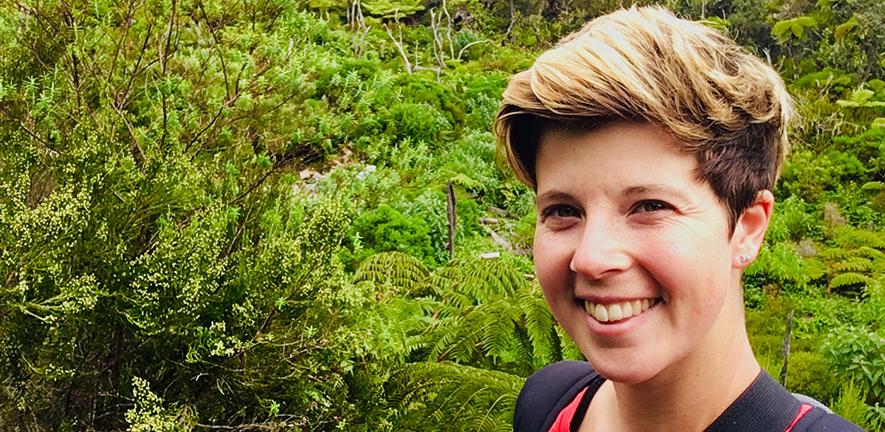
Sophia Cooke is a PhD candidate in the Department of Zoology, and a member of King’s College. Here, she tells us about splitting her time between Cambridge and Galápagos, why working in the David Attenborough Building is so special, and how a little room in Norfolk with no wifi helped build her confidence as a researcher.
My PhD is on the impact of road traffic on bird populations in Great Britain. I first came to Cambridge as an undergraduate; where I studied Natural Sciences and specialised in Zoology. I then worked as a research assistant in Cambridge before going on to do a Master’s in Wildlife Conservation at the University of Reading. In 2015, I returned to Cambridge to start my PhD with the Zoology Department.
I divide my time between Cambridge and Galápagos. While my PhD is based largely in Cambridge and focuses on the impacts of roads, I also run a project in Galápagos. I visited the islands in 2015 after completing my Master’s degree and became interested in an introduced bird species, the Smooth-billed Ani. I decided to set up a project with them and have been running it ever since, in collaboration with the Charles Darwin Foundation and the Galápagos National Park. Our aims are to quantify the impact this bird is having on native fauna and ecosystems, to analyse whether control or eradication is needed; and to consider how either of these might best be achieved.
I feel particularly lucky to be part of the David Attenborough Building. For my PhD, I work with the University and several NGOs, all of which have an office in the same building. I am constantly running up and down the stairs to ask people questions. It is wonderful to be part of such a collaborative environment.
My work is incredibly varied. One big undertaking of mine in the past couple of years was to gather as much information as possible on the introduction and potential impacts of the Smooth-billed Ani in Galápagos for a review paper. As most of this was unpublished it involved visiting or contacting various libraries and universities and going through old archives. I found a lot of information that otherwise might have never surfaced, so it was very rewarding work. I have also undertaken fieldwork, designing and building traps to catch Anis and then analysing their diets. Meanwhile, my PhD research involves a huge amount of number-crunching and statistics, which I also really enjoy.
I think having confidence in yourself is really important. During my Master’s project, I spent two months in the Norfolk Broads, studying the impact of Marsh Harriers on Lapwings and other wading birds. This was the biggest research project I had done at that stage, and I knew I would have much less input from my supervisors than I did as an undergraduate. I remember arriving in the Norfolk Broads on the first day, unpacking in my little room with no wifi, knowing I would have hardly any contact with another person for the next two months. I knew the results I wanted to achieve and had a rough idea of how to do it but I felt quite out of my depth. I realised that I had to take control of my own work, trust my own abilities and not rely on supervisors as much as I was used to. Over those two months, I began to really build respect for my own ideas as well as those of others. I grew so much as a scientist and as a person and thoroughly enjoyed the whole project. If you can learn to have confidence in yourself and your abilities, everything becomes less intimidating.
Collaboration is key. I have really seen, over the last few years, how much of a difference good collaboration and communication can make. In research, there are usually many different ways of doing things, and being able to bounce ideas around and combine the knowledge and experience of multiple people can be hugely beneficial. I have learnt so much and met many brilliant scientists from collaborating on projects. The hardest part is preventing yourself from agreeing to the tens of new project ideas that come out of each existing one!

The text in this work is licensed under a Creative Commons Attribution 4.0 International License. Images, including our videos, are Copyright ©University of Cambridge and licensors/contributors as identified. All rights reserved. We make our image and video content available in a number of ways – as here, on our main website under its Terms and conditions, and on a range of channels including social media that permit your use and sharing of our content under their respective Terms.